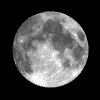Department of Physics and Astronomy: Publications and Other Research
Date of this Version
October 1984
Abstract
The period-luminosity-color relation for classical Cepheids is discussed in terms of a recent re-determinations of the distance moduli of open clusters with Cepheid members. The distance moduli of eight clusters with well established Cepheid members were determined from Stromgren four-color and Hβ photometry of the B stars. Possible sources of systematic errors in these distance moduli are discussed. Zero points are derived from these data for the period-luminosity-color (PLC) relation on the UBV system and the period-luminosity relations for near-infrared magnitudes. The present relations yield absolute magnitudes which are fainter by 0.4-0.6 mag than those now commonly used. The source of this discrepancy is discussed. These lower luminosities cause the pulsational masses of the Cepheids to be less than the evolutionary masses by up to a factor of 2.5 but bring them into good agreement with the masses of beat and bump Cepheids. Thus, the predictions of the pulsation theory are made more consistent but the Cepheid mass discrepancy is reintroduced. This revision of the Cepheid luminosity scale will directly affect distances of galaxies based on the Cepheids, but its effect on the Hubble constant depends on how much weight was placed on the Cepheids in the establishment of the distance scale in the Local Group. A comparison of distance moduli for the Large Magellanic Cloud based on various indicators with those for the Cepheids from the present calibration shows no serious discrepancy.


Comments
Published in The Astrophysical Journal 285, 501 (1984). Published by the University of Chicago Press; copyright © 1984 American Astronomical Society; reproduced by permission of the AAS. http://www.journals.uchicago.edu/ApJ/front.html